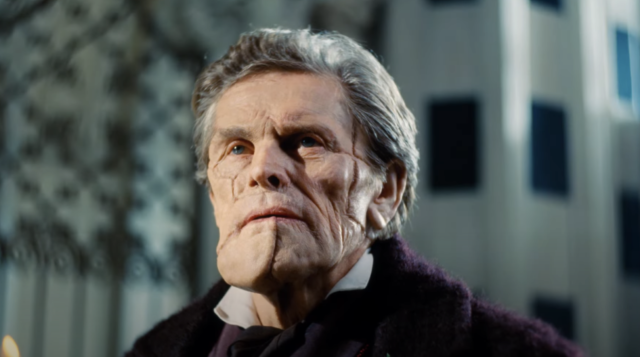Creating the world of ‘Poor Things’
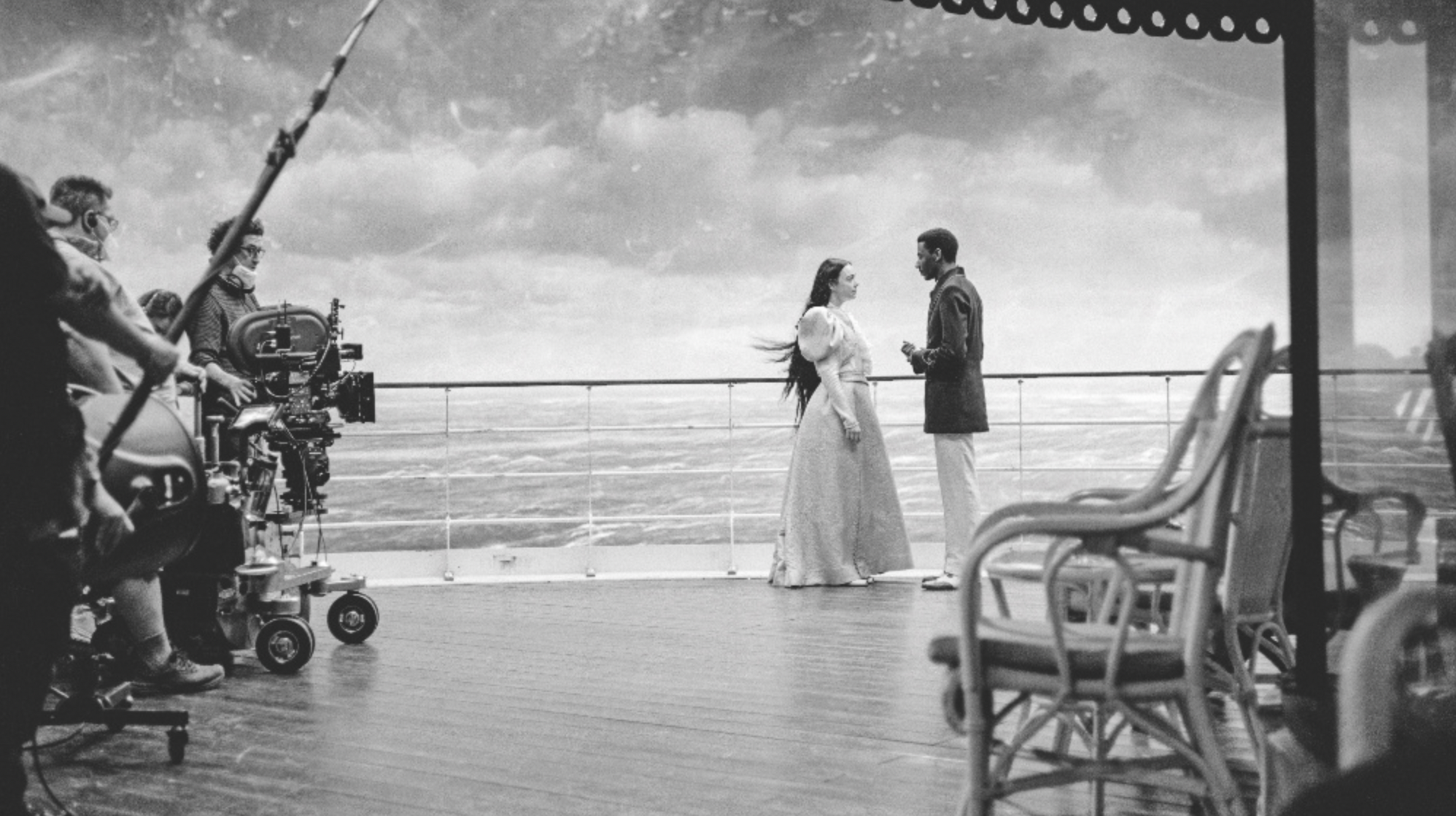
The Sets
After a lifetime stuck inside her family home, the film’s central character, Bella Baxter (portrayed by Emma Stone), travels the world in an attempt to discover it and herself. The dreamlike renderings of each location—from London to Lisbon, Alexandria, and Paris—evoke both the distinct mood of the quickly changing Baxter and the surreal tone of the film itself. With so much ground to cover production designers James Price and Shona Heath, and their teams set to work on mood boarding, throwing every idea into the mix until they landed on the mélange that felt appropriate for each step of Baxter’s journey.
“We started to collage worlds together,” Heath says. “There might have been a Brutalist building with a medical drawing and a crazy animal, and those things would equal something else. James and I would physically collage images together and sketch on top of them, then they would be put on the computer and somebody would work on them further.” Lanthimos gave Price and Heath a few references to work from—paintings by Egon Schiele, Hieronymus Bosch, and Francis Bacon. Those works served as touchstones throughout the design process, which culminated in a 200-page document detailing every element that needed to be built.
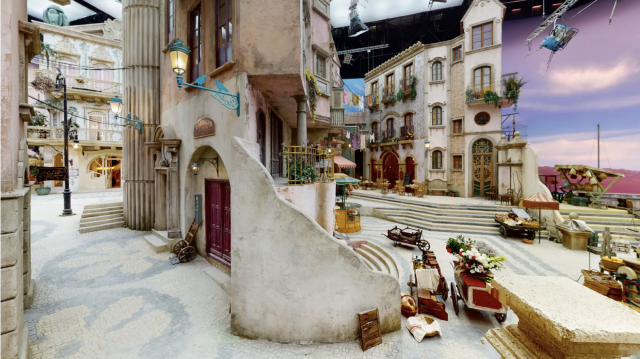
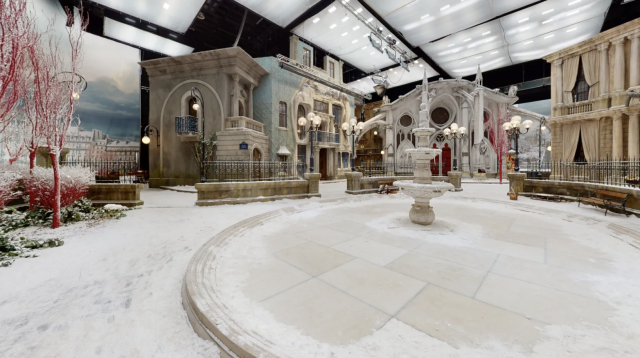
None of that would have been possible without an all-in effort from Hungary’s below-the-line talents. “The whole construction team were incredible. The art department in Hungary are just super, super talented. The skill sets of all the art directors and the drafts people, with their 3D modeling and their drafting, is impeccable,” Price says. “Other than London, I don’t believe that we could’ve done it [elsewhere] in Europe…at the scale we were building to, and the time that we had to build.”
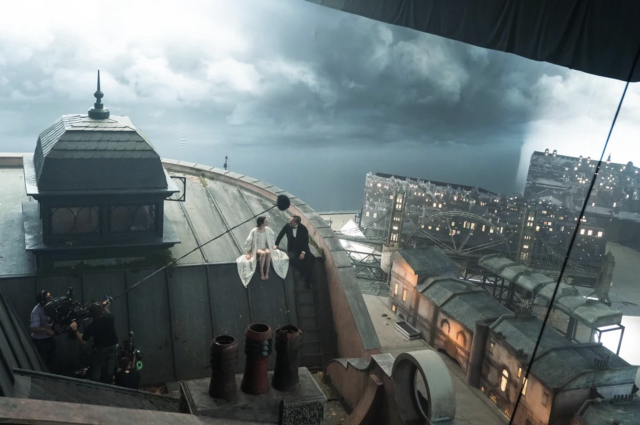
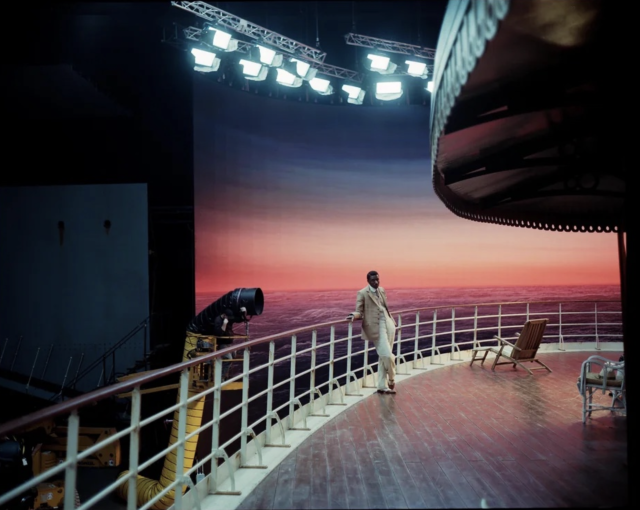
“When I first met Yorgos, he was talking about wanting to make a 1930s studio movie, but with today’s techniques,” Supplying the duo with visual references ranging from the paintings of French futurist Albert Robida to Francis Ford Coppola’s “Dracula,” the director envisioned lavish, monumental sets built from scratch and glorious backdrops splashed across LED screens. He encouraged them to let their imaginations run wild. “The brief from Yorgos was wide open,” says Heath. “He wanted to build all the worlds that we would see, mainly to keep consistency in a new-found language that was somewhere between surrealism, fantasy, otherworldly, dreamlike, but also being set in an era that was familiar.” Adds Price: “Nothing was off the table, right from the beginning of filmmaking. He wanted it to look like nothing that had ever been done before.”
To accomplish that would require studio space — lots of it — as well as craftspeople with the technical skills to bring Lanthimos’ extraordinary yet exacting vision to life. The production team scouted studios around London — including Pinewood and Warner Bros. Studios Leavesden — and traveled to Wales, Northern Ireland and Czech Republic before arriving in Hungary, where they found abundant studio space and a highly skilled crew base, along with favorable costs and an attractive 30% cash rebate. According to producer Ed Guiney of Dublin-based Element Pictures, “All roads pointed to Budapest.”
The Costumes
London-based costume designer Holly Waddington partnered with production designer and costume consultant Shona Heath to build layers of meaning into every surface. Lanthimos urged Waddington to let her imagination run, telling her, “ Take the material and come up with things and just go for it.’ I think that is a brave and bold thing to do with people you have never worked with before,” she says of the director.
“I knew that Yorgos didn’t want this to look like a sci-fi or period film,” she says, “anything like lace, beading or embroidery felt absolutely wrong”. The story draws from the Victorian era, but Waddington liberally distorts the boundaries. Instead, she took inspiration from patterns with exaggerated silhouettes and breathed new life into them through the use of modern fabrics like plastic and latex. The effect is wondrous and discombobulating, both accentuating Bella’s otherworldliness and confirming her to be a heroine far ahead of her time.
She and Heath worked through pandemic restrictions apart and then together before Waddington’s team departed to Budapest to shoot and manufacture costumes. The duo pored over imagery from fashion, art and science and looked at seashells, the insides of animals and body parts. The idea of manipulated flesh also is reflected in the pinky skin tones and clothing surfaces and silhouettes that recall body parts, which Waddington cleverly exploited for Bella.
Waddington’s costumes had to work around the statement long, black hair of Bella. “That enabled me to use much bolder colours than I could have done if she was a soft blonde. For instance, I could use lots of yellow because black and yellow are fantastic together. That’s also the colour of a bee or a wasp, nature’s war colours.”
The Prosthetics
Hair, make-up and prosthetics designer Nadia Stacey found her greatest prosthetic challenges not with the anatomical dissections by Dr Godwin Baxter (Willem Dafoe) in the operating theatre, but with the patchwork of skin on his own face. “With Baxter, he’s in this world of cutting things and putting them back together,” Stacey says. “And he’s literally like a patchwork of a man that his father has operated on and cut things away and put things back. It all stems back to the details in the script.”
Dafoe stars as the disfigured mad scientist Dr. Godwin Baxter, whose face was maimed by his surgeon father when he was younger. Physically becoming Dr. Baxter was no easy feat. According to Dafoe, the makeup team would first mock up scars so that Dafoe could get a better sense of what Dr. Baxter would look like. The process of getting into character and out of it ended up taking six hours each day, with Dafoe waking up just in time for a 3 a.m. call time. Everyone else, he said, could show up at seven.
“Four hours in, two hours out every day — I’m showing up at three o’clock in the morning, sitting in the chair, meditating and trying to deal with standing still. You can’t sleep because it’s intricate enough that you’ve got to work with the people applying it,” Dafoe emphasized. “It’s a grind, but I liked working with a mask in there — quite literally, a mask.”
